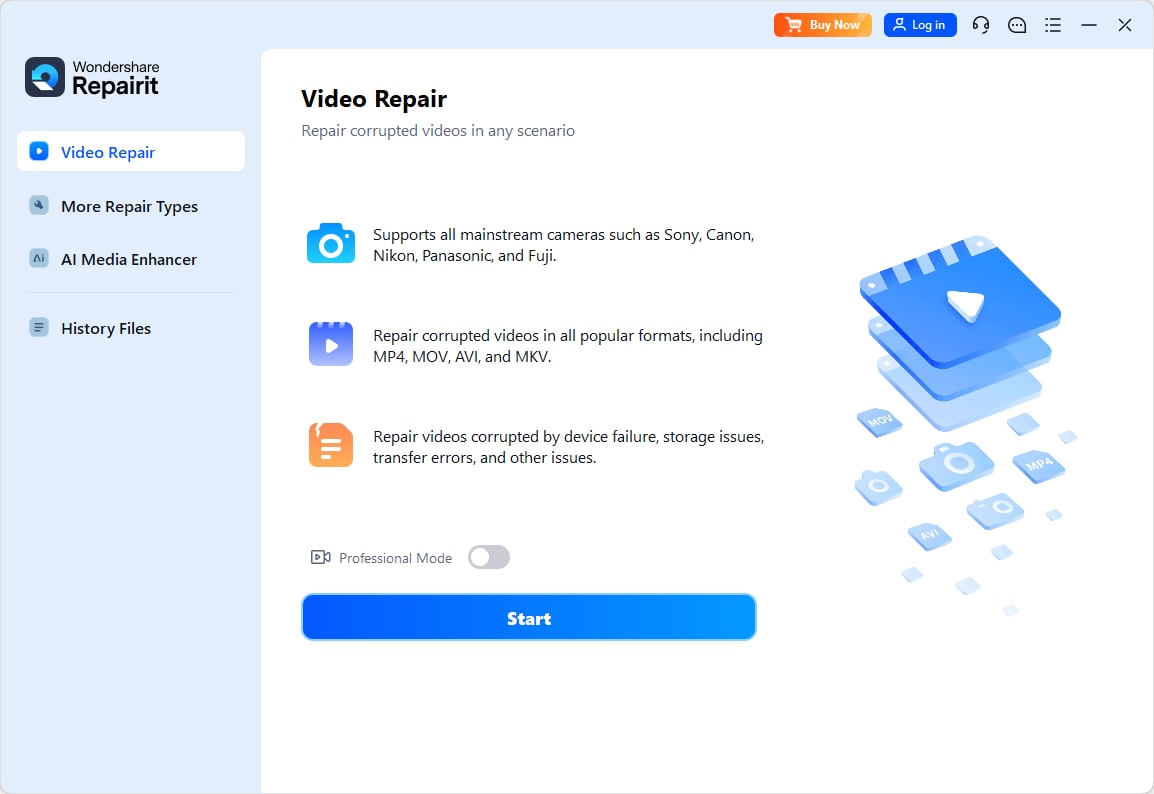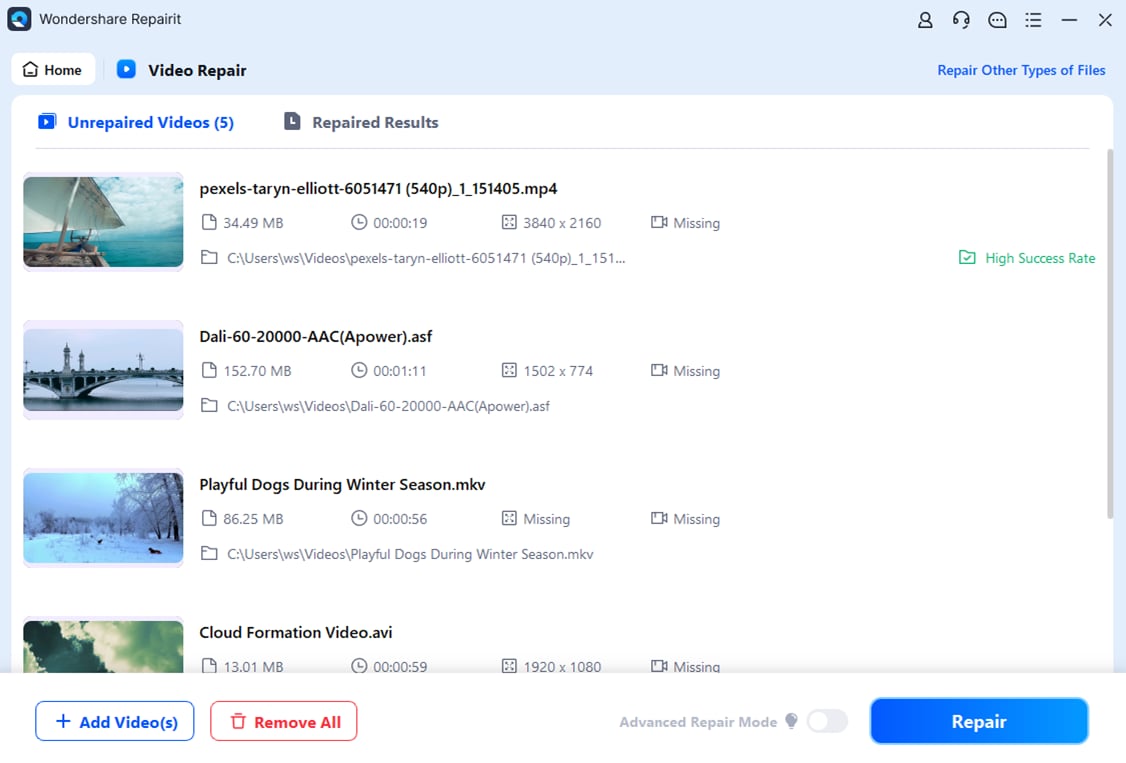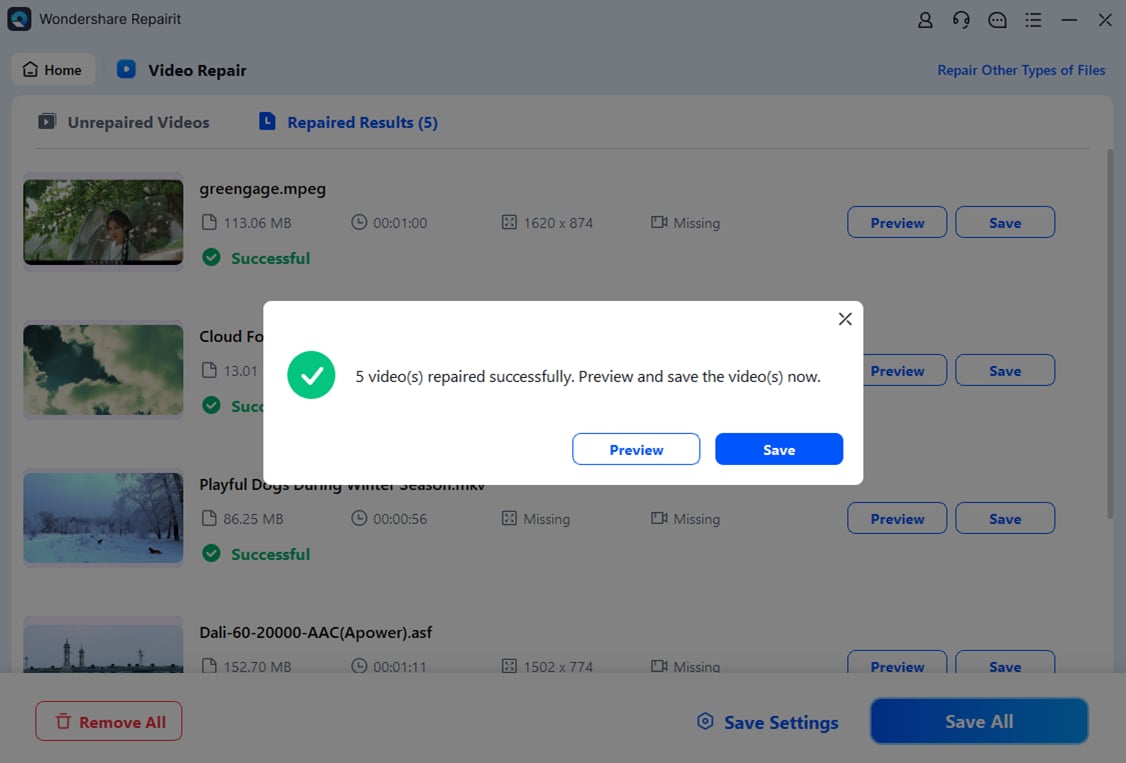Encountering the 'codec unavailable PowerPoint' error can throw a wrench into your presentation plans, especially when videos won’t play as expected. This issue often arises from unsupported formats or missing codecs. In this guide, we’ll explore different solutions to help you resolve the problem and get your videos running smoothly in PowerPoint.
In this article
Part 1. Why Is Codec Unavailable in PowerPoint?
The “codec unavailable PowerPoint” error occurs when PowerPoint is unable to recognize or play a video due to compatibility problems. Understanding the common reasons behind this error is the first step to finding a solution.
Common causes include:
- Unsupported Video Format. PowerPoint only supports specific formats like MP4 (H.264).
- Missing Codecs. If the required codec isn’t installed, PowerPoint cannot play the video.
- Outdated PowerPoint Version. Older versions of PowerPoint may lack the compatibility needed to play certain videos.
- Corrupted Video File. If the video is damaged, PowerPoint won’t recognize it.
Part 2. How to Fix PowerPoint Video Codec Unavailable Issue?
Have you ever tried playing a video in PowerPoint only to encounter an error stating the codec is unavailable? Understanding the root cause of the "PowerPoint video codec unavailable" issue and learning how to resolve it can save you from unnecessary stress during presentations. Let's explore the solutions to fix this problem.
1. Use a Video Repair Tool [EFFECTIVE]
Imagine, you’re preparing for a big presentation, and the embedded video in your PowerPoint refuses to play, showing the dreaded "codec unavailable PowerPoint" error. This situation can be nerve-wracking, especially when time is limited. One of the most effective solutions is using a reliable tool like Repairit Video Repair.

-
Repair damaged videos with all levels of corruption, such as video not playing, video no sound, out-of-sync video or audio, playback errors, header corruption, flickering video, missing video codec, etc.
-
Repair full HD, 4K, and 8K videos and support 20+ popular formats, including MOV, MP4, M2TS, MDT, RSV, WMV, MPEG, DAT, etc.
-
Repair damaged or corrupted videos caused by video compression, system crash, video format change, etc.
-
Repair critically damaged or corrupted RAW/Log/HDR videos from professional cameras such as Blackmagic Design, RED Digital, and ARRI, etc.
-
Repairit has a quick and advanced scanning mode. You can use either depending on the level of corruption the video file has undergone.
-
No limit to the number and size of the repairable videos.
-
Repaired videos are more compatible with professional editing software such as DaVinci, Composer, Final Cut Pro, and Premiere Pro.
-
Support Windows 11/10/8/7/Vista, Windows Server 2003/2008/2012/2016/2019/2022, and macOS 10.12~macOS 15.
Repairit Video Repair is made to fix corrupted or unplayable video files caused by codec issues. This tool works by scanning the problematic video file, identifying the damage, and repairing it. With a user-friendly interface and compatibility with various file formats, Repairit Video Repair makes it easy to restore your videos.
Here's how to use Repairit Video Repair to fix codec issues in PowerPoint:
Step 1. Launch Repairit on your computer. To choose the video file you want to modify, click the +Add button.

Step 2. To start repairing the file, click the Repair option.

Step 3. When the repair is complete, you may check if the file is playable by using the preview option. The corrected video may then be saved by selecting Save and selecting a folder on your computer.

Use a Video Repair Tool to Fix Codec Unavailable in PowerPoint

Related solution: Fix Different PowerPoint File Corrupt Issues
2. Convert Videos to Supported Formats
One of the easiest ways to fix this issue is to convert your media file into a format that PowerPoint supports. If your file’s format isn’t compatible with PowerPoint’s media players, converting it to a supported format can solve the problem.
Steps to Convert a Media File:
Step 1. Use an online converter or software like Video Converter.
Step 2. Convert the file to a supported format, such as MP4 (with the H.264 codec) for videos or MP3 for audio.

Step 3. After conversion, reinsert the media file into your PowerPoint presentation.
3. Install Required Codecs
Sometimes, the problem happens because your system doesn’t have the required codec. Installing the right codec pack can fix this issue quickly.
Recommended Codec Packs:
K-Lite Codec Pack: A widely used pack that supports many file formats.
How to Install a Codec Pack:
Step 1. Download the K-Lite Codec Pack from its official website.

Step 2. Run the installer and choose the components you want to install.

Step 3. Restart your computer after the installation.
Step 4. Open PowerPoint and check if the media file now plays.
4. Update PowerPoint to the Latest Version
An outdated version of PowerPoint may not support newer codecs, leading to the “codec unavailable” error. Ensure your PowerPoint software is up to date.
Steps to Update PowerPoint:
Step 1. Open PowerPoint and go to File and Account.

Step 2. Choose Update Now after clicking Update Options.
Step 3. Wait for the update process to complete.
Step 4. After updating, try playing the media again to check if the error persists.
5. Optimize Embedded Videos in PowerPoint
It’s better to embed media files directly into your PowerPoint presentation instead of linking them. Linked files can cause problems, like codec issues, especially if the original file’s location is moved or no longer available.
Part 3. How to Avoid Codec Unavailable PowerPoint Issue?
Preventing the "codec unavailable" problem in PowerPoint can save you from last-minute stress during presentations. Here are some simple tips to avoid this issue:
- Use Compatible Media Formats. Always use media files in formats that PowerPoint supports, such as MP4 with the H.264 codec for videos or MP3 for audio.
- Embed Media Instead of Linking. Embed your media files directly into the presentation to avoid issues caused by missing or moved linked files.
- Install Codec Packs. Ensure your system has essential codec packs like K-Lite Codec Pack or CCCP, which support a wide range of media formats.
- Test Your Presentation in Advance. Play all media files within PowerPoint ahead of time to ensure everything works properly.
- Keep PowerPoint Updated. Regularly update your PowerPoint software to the latest version to ensure compatibility with modern media formats.
Conclusion
Everyone encounters the "codec unavailable PowerPoint" issue from time to time. To fix this issue, multiple solutions are offered online for free. Moreover, to avoid future problems, please follow the tips mentioned above. These small steps can save you time and stress, ensuring a hassle-free presentation experience. Remember, technology should make things easier, not harder — so don’t let this issue hold you back!
FAQ
-
Why does PowerPoint show the "codec unavailable" error?
This error usually appears when PowerPoint cannot recognize or play a video due to unsupported formats, missing codecs, or outdated software. -
What video formats are supported by PowerPoint?
PowerPoint supports formats like MP4 (H.264 codec for video, AAC codec for audio), WMV, and AVI with specific codecs. -
How can I prevent codec errors in the future?
To avoid codec issues, always use compatible media formats, embed your files instead of linking them, and ensure your system has the necessary codec packs installed.


 ChatGPT
ChatGPT
 Perplexity
Perplexity
 Google AI Mode
Google AI Mode
 Grok
Grok
